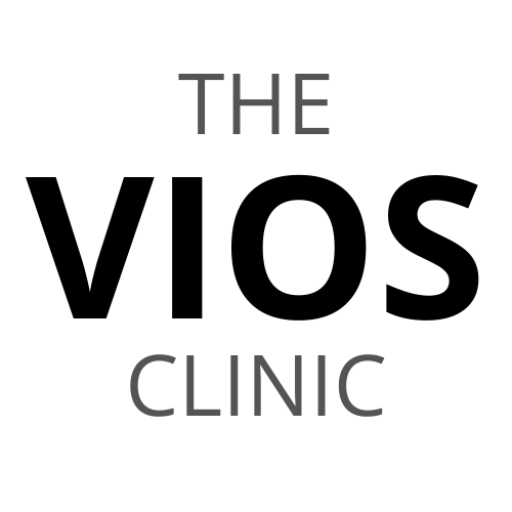Essential Practice Guide for a Career Giving Online Doctor Consults
What is a Telemedicine Physician?
A telemedicine physician provides remote patient care through virtual communication channels – either live via video consult, telephone, or online chat, or at a later time through written communication.
Telemedicine physicians can treat common non-emergency health conditions like flu or ear infections, help manage chronic conditions and pain, monitor prescription medications, provide mental health counseling, or work in specialty fields like obstetrics and gynecology.
Telemedicine physicians can work part-time or full-time.
What skills do I need to practice telemedicine?
Practicing telemedicine is similar to practicing traditional medicine. Following best practices of good bedside manner are still important, as are learning how to convert your bedside manner to webside manner for telehealth visits.
Fundamentally, telehealth providers need to be comfortable with basic technology, taking video calls and interacting with patients over a mobile phone, and asking patient questions that can help diagnose without a physical examination.
Good communication skills are key to a successful career in telemedicine.
Do I need special training to work in Telemedicine?
Outside of medical school and residency, no special training is needed to become a telemedicine physician. Telehealth companies provide training on how to use their technology, but if you can use Skype and Zoom you are halfway there.
Telemedicine physicians require the same education as traditional doctors: a bachelor’s degree, a doctorate or professional degree from medical school, and then residency practice. After residency, doctors will need to take medical exams for licensure and some may choose to get board certified by taking the board exams.
In addition to schooling and certification, physicians should try and practice for at least four years outside of residency before beginning in telemedicine, which sets the gold standard in hiring requirements for most telehealth companies. The best telehealth companies look for physicians with a few years of clinical experience under their belt, as the lessons from in-person patient interactions can be invaluable.
Embarking upon a career in telemedicine is a relatively easy transition to make from practicing traditional medicine. Considering the lifestyle benefits of flexibility and being your own boss, it’s no wonder more physicians than ever are jumping at the chance to work from home in telehealth.
To be successful as a Telemedicine Physician, you should be detail-oriented and able to communicate with patients effectively through various virtual communication channels. Ultimately, an exceptional Telemedicine Physician should keep abreast of the latest developments in the healthcare industry as well as demonstrate sound medical knowledge and excellent analytical skills.
Telemedicine Doctor Advice Online Responsibilities
- Discussing and reviewing patients’ medical history, symptoms, allergies, and current medications.
- Asking patients situation-specific questions to formulate accurate diagnoses.
- Formulating suitable treatment plans to address non-threatening conditions, such as common colds, cases of flu, ear infections, urinary tract infections, allergies, and rashes.
- Prescribing various diagnostic tests to aid in providing accurate diagnoses.
- Analyzing diagnostic test results and explaining them to patients.
- Prescribing suitable medications to patients and providing proper dosage and administration instructions.
- Maintaining accurate records of patients’ contact details, medical history, prescribed medications, allergies, diagnoses, and progress.
- Advising patients on suitable diets and exercise regimens to improve their overall health.
- Assisting patients in managing chronic health conditions.
Telemedicine Physician Requirements before taking Doctor Appointments Online
- Doctor of Medicine (MD) or Doctor of Osteopathic Medicine (DO) degree. or comparable medical degrees such as basic MBBS.
- License to practice medicine in the country of graduation, or the country of current residence
- Postgraduate certification that is internationally recognised to certify higher skills capacity as an expert in a particular field – along with adequate number of hours of accumulated practical clinical experience (supervised and independently)
- Proven experience counselling patients with various communication apps such as Zoom, Whatsapp and others.
- Sound medical knowledge and keeping up to date with recent evidence-based trends.
- Excellent analytical and problem-solving skills.
- Exceptional communication skills – with strong proficiency in English. Multiple language proficiencies may be a significant advantage for many international patients
- A patient and compassionate disposition.
- Detail-oriented.

Virtual appointments are now commonplace.
But how does bedside manner translate through an Online Doctor Consult?
According to mHealthNews, “desktop manner is the new bedside manner.” And it can be a game changer. Even the best physician can lose a patient if they can’t connect and engage with them on an emotional level. Increasingly, the emphasis in healthcare is on value, and that is what patients have come to expect.
Feeling empathy toward a patient and actually displaying empathy outwardly are two different things. Learning how to project a caring and genuine connection to your patient during a virtual visit will be the key to your success as a telehealth provider.
Why is virtual bedside manner important?
The best bedside manner will foster a patient’s trust, and improve compliance to the treatment plan. If patients trust and like you, they will trust and follow your recommendations. In fact, an article from Modern Healthcare references a 2014 study that shows bedside manner actually statistically impacts patient health. It affects the incidence of obesity, asthma, diabetes, hypertension, and osteoarthritis. It can also affect a patient’s ability to lose weight and maintain blood sugar levels.
Essentially, increasing your empathy increases your value, which increases your patient’s experience.
“The patient experience drives quality. That is what is expected by people. The thing that will affect their sense of having a good experience is their sense of a clinician whom they believe understands what they’re going through. That’s the definition of empathy.”
Dr. James Tulsky, MD (Dana-Farber Cancer Institute and Brigham & Women’s Hospital)
16 tips to enhance your ‘Webside Manners’ in Your Virtual Clinic Career
Many caregivers are accustomed to our own versions of exceptional bedside manner. A handshake, a friendly introduction upon entry, asking about a hobby – all are great ways to build rapport with a patient. These skills come naturally to some of us. For others, it can take years of direct patient contact to perfect.
Because of the response to COVID-19 and stay-at-home orders, telehealth is an integral part of everyday practice for clinicians. The transition from bedside to “webside” manner may not be as seamless as anticipated. Making a good first impression with webside manner sets the tone for future visits with new and repeat patients.
Preparing for the online doctor appointment encounter
Following best practices during the encounter can help foster trusting and lasting patient-clinician rapport. There are several preparation steps to take prior to a patient virtual encounter to help ensure a proper introduction.
Introduce yourself.
Tell your patient a little about yourself and what to expect during the appointment. If you don’t start off this way, the whole appointment will feel distant. On the flip side, don’t end the appointment abruptly and turn off the camera. Make sure to leave time for questions and answers at the end of the session.
Display empathy.
This can mean showing compassion, helping calm fears, and providing hope when serious medical conditions arise.
Maintain eye contact.
This is different via technology than in-person. On video you will need to look into the camera on your computer, and not at the patient’s image on the screen. Looking at the image can come across as you looking down and not visually connecting with your patient.
Be aware of your surroundings.
Make sure the room you are in is not cluttered, and that the lighting quality is good so that you can be clearly seen.
Communicate clearly.
Explain what you are doing. If you are going to look away to read the chart, tell your patient what you are doing so they don’t interpret your behavior as not paying attention to them.
Be comfortable with the technology you are using.

This will make you look competent and prepared, as well as positioning you to be able to help the patient at the other end with their technology if need be.
Use of good quality (in-ear) headphones may be needed to ensure a strong audio signal to communicate clearly, especially if there are background noises.
Pay attention to your body language.
Make sure what you are saying with your body aligns with what you are saying with your words. Nonverbal communication becomes more of a focal point on camera.
Privacy is honorable
Although it is not always possible to conduct your session in your own private study, it is best if you can allocate a section of your home which can be secured away from your family members. Privacy is an important factor for patients so that they may feel at ease in describing their sensitive healthcare issues.
Perhaps use a bedside stand, a study desk or the dining room to conduct your consultation session at the time of your patient appointment. It is best to communicate your needs to your family – to maintain a quiet and respectful environment as a token of respect to your patient.
Try to come across as relaxed and comfortable.
Be kind and warm. Be aware of your expressions. On camera a furrowed brow can come across as angry, even if you are just thinking. A smile and laughter will increase the bond between you and your patient.
Dress appropriately – as if you are in your Clinic

Even though you and your patient are hopefully safe at home, professionalism is a strong prerequisite to establish trust in your community. It is always recommended to be presentable offline and online – therefore one must dress appropriately with simple business casual attire and a lab coat.
Excessive use of accessories such as jewellery is not recommended as it may be distracting to the patient.
Watch your posture.
Slumping conveys disinterest, leaning in too close to the camera can look intimidating, and leaning back too far can mimic disinterest.
Control distractions.
Avoid side conversations or taking any phone calls. Limit anything that will distract you from your patient.
Don’t interrupt.
Remember that a video delay could cause you and your patient to unintentionally talk over each other. Practice active listening. Repeat back what your patient said so that they feel understood and validated.
Prepare for weak signals
Wifi is the best network signal for video-based telecommunications. In case of possible load shedding or dropped signal strength, it may be necessary to keep some emergency data in your smartphone so that you may regain the session.

Look ahead at the camera
Many of us are accustomed to looking at the main image on our screen when looking up treatments or charting in the electronic health record (EHR). In telehealth, please try to look directly at the camera to maintain direct eye contact. Try your best to speak clearly, maintain upright posture and make time for listening.
Be sure to smile!
Review the Session
As you are near the end of the session, always ask the patient if they have answered their questions properly. Did they understand all the issues and ask if they have any other queries.
Quickly summarising the session assures the patient that you have heard and acknowledged their health issues fully.
It is recommended that the patient has a follow up review, either with you are a referred specialist if needed.
Good doctor-patient communication doesn’t just create more enjoyable doctor’s appointments; it can also promote better adherence to medications and lifestyle adjustments, and, ultimately, less pain and better overall health.
Dr. Tania Elliot, MD (TeleHealth expert)
Start Your Own Virtual Practice

BLOG AUTHOR
Dr. Ismail Sayeed
Dr. Sayeed is the Medical Director of ViOS, Inc. He is a deeply committed physician entrepreneur & medical blog writer. While building the global infrastructure of the VIOS Clinic, he is dedicated to educate people on the potential of specialist telemedicine for managing chronic diseases.
Read more about him in his author bio


0 Comments